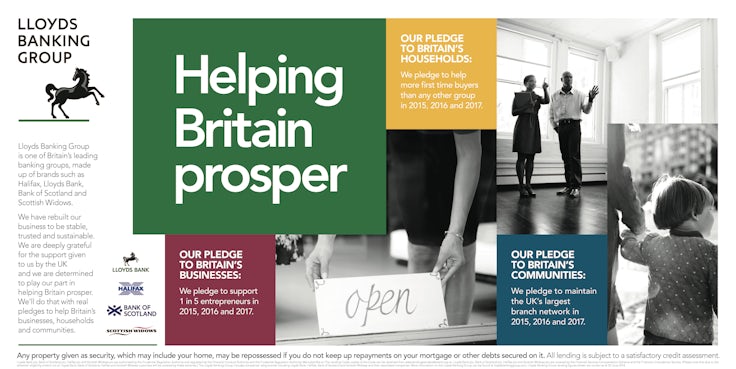Lloyds says brand has ‘turned a corner’ as it reintroduces the black horse in new campaign
Lloyds Bank is launching a new brand campaign featuring its iconic black horse, with head of marketing communications Jean Reddan saying the brand is aiming to move away from the advertising of its rivals that ‘sugar-coats life’.
The new campaign, the second since Lloyds switched its account to adam&eveDDB last year, features the Lloyds black horse dramatically galloping through real-life scenarios including the birth of a child and a funeral. Activity will run in TV, print, digital, cinema, outdoor and social media.
Lloyds initially brought back the black horse in last year’s 250th anniversary campaign and Reddan says it is here to stay.
She told Marketing Week: “In our testing, spontaneous association of the black horse was at 94% so as a brand icon it really is comparable to the Apple logo or the Nike tick. It’s been with us for 250 years and is crucial to our heritage. We want to reintroduce the strength of the horse to rebuild trust.
“What stands out about this new advert is it isn’t sugar coated. We understand there are good things and bad things in the world. We are on the public’s side whatever it is and that’s a brave stance for a bank to take.
“The temptation is too often to sugar coat real life. Our marketing isn’t people jumping up and down dancing because they’ve opened a current account. That isn’t genuine.”
‘Utilising our iconic British brand’
https://www.youtube.com/watch?v=f6eZ3WQCjhA
Following a break, Lloyds brought back the black horse last June to celebrate its 250th anniversary in a campaign that spanned historic events such as World War 1. Reddan, without revealing numbers, claimed the campaign was a “huge success”.
“It beat all our metrics and achieved great cut through. People reacted positively to it and realised that our history creates a big element of trust,” she added.
When questioned if bringing back the black horse could appear like the banking brand was ‘playing it safe’, Reddan countered: “It isn’t too safe, I disagree. Bringing the horse back shows we are proud of our heritage. Why would you be ashamed of fully utilising an iconic British brand?”
Turning the corner
Lloyds, much like its rivals in the banking sector, is no stranger to controversy following the global financial crisis.
Last month, it reported a 7% fall in annual profits as it blamed £2.1bn of additional charges it had set aside to cover the ongoing payment protection insurance (PPI) scandal.
And according to YouGov BrandIndex, its Index ranking, which is measures consumer perception of metrics including quality, value and reputation, has risen by a statistically significant rate over the last year.
Lloyds’ Index score is up 2.4 points to give it a score of 0.5 – placing it 15th on a list of the UK’s 30 biggest banking brands.
However, Lloyds’ buzz ranking, a balance between positive and negative consumer sentiment of a brand, has fallen at a statistically significant rate over the last 12 months. It declinded 2.1 points to -2.3, putting Lloyds at 27th on the table, with only Barclays, HSBC and the Royal Bank of Scotland worse off.
Reddan admits the bank still has a long way to go in fully rebuilding trust.
She concluded: “We are turning a corner. Our marketing is all about building trust again. We’ve done a lot internally to pay back what we owe to the government and our body language in the market is to show we’re here for customers.
“We still have work to do – absolutely, as do all of the banks that have created mistrust since the banking crisis – but we are happy to do that work.”






